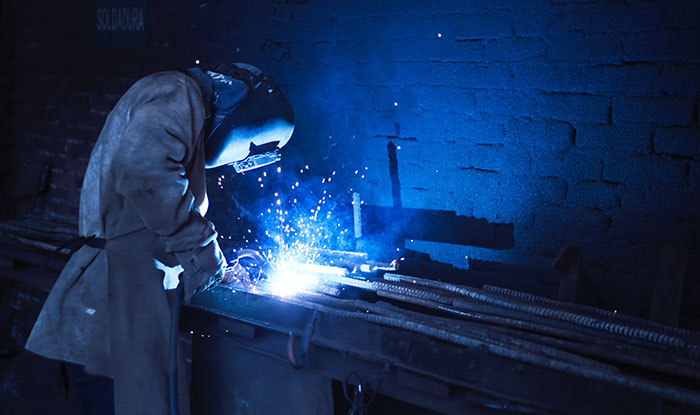As you know, loading docks are an important part of bringing consumers fresh, safe food. A lot of the U.S. food supply is shipped through loading docks, and as Food Manufacturing magazine pointed out, authorities like the Food and Drug Administration and new laws like the Food Safety Modernization Act have started to more closely regulate these areas. To enhance your establishment's safety by going above and beyond these loading dock safety regulations, there are many tips to keep in mind, from slip-resistant shoes for workers to forklift safety measures, minimized stacking heights and proper pallet wrapping techniques.
Many hazards can occur around loading dock areas. Among these are slips and falls, forklift accidents, unsecured loads, debris on the floor, lifting injuries, contamination, cold chain breakdowns and chemical splashes. To sidestep these dangers and increase the safety of your workers, take the following 10 loading dock safety tips into account.
Train and Equip All Personnel
Everyone who works around the loading dock should be thoroughly trained on loading dock safety procedures. They should know how to identify hazards and respond to issues when they arise. Your employees should also be outfitted in the proper safety equipment, like gloves and nonslip work shoes. Shoes For Crews has a number of slip-resistant shoes for men and women that can reduce the possibility of slips and falls around the loading dock.
Invest In a Seal Or Shelter
According to Food Manufacturing, dock seals or shelters create a barrier between the back end of the truck and the inside of the loading dock. The closed environment helps keep out wind, rain, dust, bugs and other contaminants while preventing energy from escaping from inside the building.
Improve Visibility
Consider painting or taping the edges of the loading dock to improve visibility. You may also want to mark the floors with yellow tape or paint to point out walkway barriers, doorways, parking aisles and overhead obstacles.
Use Automatic Vehicle Restraints
Automatic vehicle restraints can help prevent theft, reduce contamination and boost dock worker safety. A restraint wraps around a trailer's rear-impact guard, which secures the trailer to the loading dock. A tight connection makes contaminants less likely to enter the building.
Establish Rules for Truck Drivers
CNA Financial, an insurance company, suggested putting loading dock safety rules in place for drivers.. Have them sound the horn with two quick beeps before backing to the dock. Train them on the signals that your spotters will make to direct the vehicle to the loading dock.
Make Lifting Easier
Grainger Industrial Supply recommended reviewing the ergonomics of your establishment to make lifting easier for your employees. Make sure conveyors are at an appropriate height to eliminate lower back stress. Put heavier objects at knee or chest levels. Limit the amount of weight a worker has to carry and have other workers assist when necessary.
Use Wheel Chocks
Wheel chocks are wedge-shaped blocks put in front of the rear wheels of a truck to keep it from moving away from the dock during loading or unloading. Require your employees to verify that the chocks are in place. Inspect the chocks on a regular basis to ensure that they're in good working order.
Employ a Vertical Dock Leveler
A vertical dock leveler bridges the gap between the loading dock floor and the bed of the trailer. It helps maintain cold chain integrity, environmental control and security. "Drive through" applications allow dock workers to open the doors of the trailer inside the building, which further secures the area.
Keep Work Surfaces Clear and Clean
It almost goes without saying that keeping the loading dock area clear and clean is a necessity. Cleaning up spills and clearing clutter will ensure visibility and minimize slip, trip and fall hazards. Inspect the loading dock area before each use.
Secure Pallets Properly
Grainger recommended using plastic or metal banding to secure pallets for transportation. Have employees shrink-wrap loose items for transport. Small items especially could fall through the overhead guard of a lift truck.


